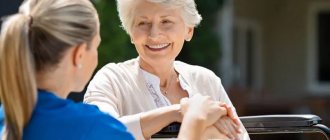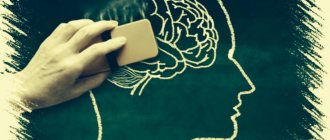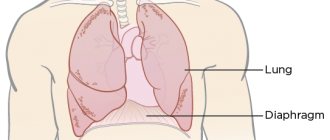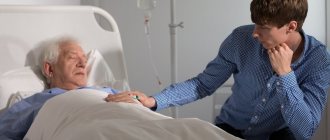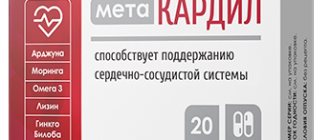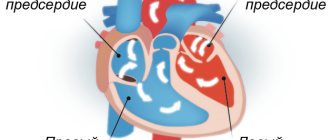Brain stroke is a serious disease characterized by focal pathological damage to brain tissue, which manifests itself in neurological consequences. Women are statistically less likely to suffer from a stroke than men. As a result of the disease, some areas of the brain lose their functional abilities.
A person almost completely loses the ability to navigate in space, there is paresis of the limbs, loss of sensitivity, problems with speech and swallowing.
Types of stroke
Clinically, secondary and primary stroke are distinguished. There are also pathologies that are subarachnoid, hemorrhagic, and ischemic in nature. Ischemic pathology often occurs during a heart attack and is characterized by acute disruption of the conductivity of cerebral vessels, the formation of blood clots and air plugs.
With the hemorrhagic variant of the disease, local, extensive and generalized foci of hemorrhage appear. Sometimes the entire brain zone is affected, which is characterized by a malignant course. Subarachnoid stroke occurs due to traumatic rupture of blood vessels and often causes irreversible tissue damage.
Causes of pathology
A stroke occurs against the background of certain negative factors. Prevention of cerebral stroke is based on eliminating the main causes that influence the occurrence of the pathological condition. Age does not always have an effect on the manifestations of stroke. It can occur both in the elderly and at a young age. But according to statistics, people over 60 years of age still get sick most often.
The process often manifests itself in physical inactivity, excess weight, low physical activity, alcohol and nicotine abuse, a history of cardiovascular diseases, sickle cell anemia, brain injuries, atrial fibrillation, tumor processes, and migraines.
Symptoms and first signs of stroke.
The main causes of death from stroke are: lack of prevention, unnoticed symptoms of the disease in time and, as a result, late seeking medical help.
According to statistics, only 15 percent of people go to the hospital on time when their health worsens. You cannot be indifferent to yourself and others, especially older people. At the first signs of a stroke, you should urgently call an ambulance. Caring for an elderly person lies not only with his relatives, but also with other people nearby. The main symptoms of a stroke are:
- Sudden weakness, numbness of the limbs, spasms;
- Drooping of the corner of the mouth, smoothing of the nasolabial fold,
- Disorientation in space, headache, dizziness;
- Speech problems, complete or partial hearing loss;
- Unsteadiness when walking, unsteadiness of gait.
- Facial asymmetry.
Types of disease prevention
How to avoid a stroke? There are several methods that are graded depending on the nature of the disease. In any case, this is a complex process that includes proper patient care, the use of the basics of exercise therapy, therapeutic massage and therapeutic drugs. There may be a lot of reasons, but the methods of influencing the body should prevent undesirable consequences.
In clinical medicine, the following types of preventive effects are distinguished:
- Primary. It allows you to avoid the onset of the disease before its clinical signs;
- Secondary. A set of therapeutic and physiotherapeutic measures that prevent repeated damage to brain tissue, which can threaten the death of the patient;
- Tertiary. It is developed against the background of secondary measures, when there is already a history of stroke. This is medicinal, psychological, labor rehabilitation, which allows you to return a person to a normal life.
Controlled and uncontrollable risk factors should also be taken into account and differentiated. How to prevent a stroke? It is necessary to exclude uncontrolled hypertension, trying to keep blood pressure normal, stop drinking alcohol and smoking tobacco, and be aware of the presence of embologenic cardiac pathologies, which are detected by ultrasound or ECG of the heart.
We have identified controllable risk factors. Uncontrollable factors include physiological age. It is no secret that after 55 years, the likelihood of a stroke increases by more than two and a half times. This also includes being male and genetic background.
Who is guilty?
There are two culprits. The first culprits are diseases of the cardiovascular system, leading to impaired cerebral circulation. The second culprits are ourselves, who are negligent about our lives and health.
For example: Do you or your loved ones have a car? How often does this car undergo the required inspection? I’m willing to bet that in our country, their owners pay many times more attention to cars than to themselves.
But the question is: can a person use a machine if his arm and leg do not work? What if he can’t even eat food or relieve himself without outside help?
Drug prevention measures
Most often, doctors use medications on the body. Drugs for the prevention of stroke should be prescribed strictly under the supervision of the attending physician. What do such procedures include?
- Drug correction of blood sugar and cholesterol levels. For these purposes, a drug or complex of drugs is selected;
- Maintaining normal blood pressure levels. If the indicators do not correspond to the norm, then it is advisable to take certain medications for medical reasons;
- Anticoagulant and antithrombotypic therapy;
- Timely treatment of concomitant pathologies of the heart and blood vessels.
Which remedy works well? In this situation, everything depends on the physiological characteristics of the body. Doctors often prescribe bile acid sequesters, statins, antioxidants, drugs that regulate blood pressure, fibrates, components of fish oil and nicotinic acid.
Other types of preventive effects on the body
We have already said above about correcting blood pressure levels and hypertension. It is also necessary to monitor the development of diabetes mellitus, if there is a history of it. Diabetic angiopathy often affects the functionality of cerebral vessels. This can cause severe focal lesions.
You should carefully monitor your diet and adjust your body weight. The diet should not contain foods rich in fat and cholesterol. It is important to avoid physical inactivity, and therefore it is worth paying attention to massage, exercise therapy, swimming in the pool or other types of physical activity that regulate blood circulation and blood pressure in the body.
You should also monitor your emotional state. We must try to avoid excessive stressful situations.
Stroke in old age can have serious consequences for patients. The recovery period lasts quite a long time, and many older people cannot regain lost functions. In private boarding houses “Caring for Loved Ones”, high-quality care for the elderly after a stroke is provided based on developed tactics that give real positive results. Experienced specialists work with elderly people, surrounding them with maximum attention and care.
St. Petersburg State Budgetary Healthcare Institution "Nikolaevskaya Hospital"
July 19, 2019
What is a stroke
Effective prevention of cerebral stroke is impossible without knowledge of the causes of the development of this disease.
A stroke is a serious (acute) problem with blood circulation in the brain. The cause may be a rupture of some, not necessarily large, vessel - this type of stroke is called hemorrhagic. Or a blood clot that blocks the flow of blood is a stroke, respectively, an ischemic stroke.
Depending on which part of the brain was damaged, the neurological functions for which it was responsible suffer. Someone loses their speech. Someone is paralyzed - partially or completely. Some people have breathing problems. Some people even die.
Stroke statistics are disappointing: 31% of patients who have suffered a stroke require special care, 20% cannot walk independently, and only 8% return to normal life after long rehabilitation. But the worst part is that stroke is difficult to predict. It’s not for nothing that it’s called a stroke: an acute brain disorder develops suddenly and quickly. Often literally out of nowhere: just now the person was laughing and joking, and now they call him an ambulance.
Who's at risk
Some people are more vulnerable to developing a stroke than others. And most often these are those who:
Suffering from hypertension. This is the most common cause of strokes.
Has some kind of heart disease (for example, heart failure or arrhythmia).
Suffering from diabetes. Diabetes damages blood vessels, including those of the brain, increasing the risk of hemorrhages.
Is overweight.
Takes certain medications. Dangerous medications include those that alter estrogen levels. For example, birth control pills.
Leads a sedentary lifestyle.
Has high blood cholesterol levels.
Smokes.
Suffering from sleep apnea.
Over 55 years old. According to statistics, every decade after age 55, the risk of having a stroke doubles.
Has a family history of strokes: one of his close relatives became victims of a stroke.
Is a man. Women have a significantly lower risk of stroke.
If at least a few points can be attributed to you, you need to take care of yourself. Preferably today.
What to do to prevent stroke
Stroke prevention comes down primarily to lifestyle modifications. Here's what, according to experts from a reputable research organization, should be done first:
- Control your blood pressure People suffering from arterial hypertension are especially likely to suffer from strokes. It is they who experience brain hemorrhages (hemorrhagic strokes). Moreover, two scenarios are possible: either one of the brain vessels ruptures, or blood leaks through its wall into the surrounding tissue for some time. In any case, high blood pressure (or pressure surges) plays a major role in this process. And for a hypertensive patient, it is very important to keep the situation under control and regularly take medications prescribed by a doctor to help maintain blood pressure at an optimal level - no more than 130/80 mmHg.
- Control your cholesterol levels Most strokes occur due to narrowing or complete blockage of the arteries in the brain (ischemic stroke). The cause is cholesterol plaques deposited on the walls of blood vessels. To minimize the likelihood of disease, it is necessary to adhere to a diet that involves limiting fat intake. It should be borne in mind that not all fats are harmful to the body (for example, polyunsaturated omega-3 and omega-6 fatty acids are very beneficial).
- Control your blood sugar levels According to statistics, the presence of diabetes increases the risk of stroke by 2.5 times. This is not surprising: diabetics often experience heart failure, excess weight and poor condition of the walls of blood vessels. In addition, when carbohydrate metabolism is disturbed, the rate of removal of water from the body increases, which increases the thickness of the blood. To avoid the development of a stroke, it is necessary to monitor your diet, limit the consumption of fast carbohydrates and monitor blood glucose levels by periodically taking appropriate tests.
- Watch your weight Excess weight brings with it several factors that increase the risk of stroke. This includes an increase in blood pressure, cardiovascular diseases, and the possible development of diabetes. Losing even 4-5 extra pounds will greatly improve your chances of avoiding a stroke.
- Eat more vegetables and fruits At least 4-5 servings (apple, coleslaw, grilled vegetables, etc.) per day. Plant foods lower blood pressure and improve vascular elasticity. And this, in turn, is an excellent stroke prevention.
- Quit smoking And also visit smoking rooms for company. Passive smoking, like active smoking, has a destructive effect on blood vessels.
- Exercise regularly Physical activity reduces the risk of developing all types of stroke. Aerobic training is especially good: walking, running, swimming, cycling, low-impact fitness. The exercises work comprehensively. They help reduce weight, improve the overall condition of blood vessels and the heart, and reduce stress. Try to increase the duration of your daily workouts to at least 30 minutes.
- Manage stress At the moment of nervous tension, a large amount of adrenaline is released into the bloodstream. Glucose levels rise sharply, the heart begins to work more actively, and blood pressure rises. There is a simultaneous load on the vessels, which can lead to a stroke. Of course, it is impossible to completely eliminate stress from life, but it is worth learning to control your reaction to stressful situations. People prone to nervousness may need to consult a doctor - he will recommend sedatives.
- Get an annual medical examination. A timely visit to the doctor will help to identify health problems in time and begin treatment on time. Unfortunately, it is impossible to reduce the risk of stroke to zero. Therefore, in addition to preventive measures, it is important to know what a stroke looks like and what to do if it happens to you or someone around you. Doctors have several hours to save a person. Everyone needs to know the symptoms of a stroke in order to recognize the disease in time.
Stroke is the second (after coronary heart disease) cause of death in Russia. A fifth of patients become severely disabled after a stroke. But many consequences can be prevented if you call a doctor in time.
The first 3-6 hours after a stroke are the “therapeutic window” - the time during which medical care is most effective. Sometimes a person does not immediately notice that something is wrong with him, or thinks that the ailment will go away on its own. Because of this, valuable time is lost. Therefore, it is important to know what a stroke looks like and what to do if it occurs.
Main signs of stroke
1. A sudden and severe headache begins.
2. The man loses consciousness.
3. Balance is disturbed, gait becomes unsteady.
4. Part of the body on one side, for example, half of the face, goes numb.
5. Speech problems appear: it is difficult to pronounce words.
6. Vision is lost in one eye or in both eyes at once.
How to understand for sure that it is a stroke
Ask the person to do a few simple steps:
- Smile. If a person cannot smile or the smile comes out one-sided (and this was not the case before), sound the alarm.
- Speak. Ask the person to repeat a simple sentence after you or recite a poem. After a stroke, articulation is impaired and speech becomes slurred.
- Stick out tongue. If a person cannot do this, if the tongue involuntarily tilts to one side or looks askew, then this is a stroke.
- Raise both arms evenly. With a stroke, a person will not be able to control both hands equally well.
— Raise your hands in front of you and close your eyes. If one arm falls involuntarily, this is a sign of a stroke.
— Write an SMS. Researchers at Henry Ford Hospital noticed that patients who had no other signs of stroke were unable to type a coherent message, instead writing a nonsensical string of words without noticing it.
If a person has failed at least one of the tasks, this is enough to act immediately.
What to do if a person has a stroke
First, call an ambulance. Be sure to describe why you suspect a stroke: the headache began suddenly, the person lost consciousness or balance. Tell us what the patient cannot do: cannot smile, cannot raise both hands, cannot pronounce words.
If you have a stroke, you need professional help as quickly as possible.
After calling an ambulance, place the person on pillows, the elevation should start from the shoulder blades. Provide access to fresh air: open a window or door in the room, unfasten tight clothing.
Do not give water or food because organ functions may be impaired and the person may have difficulty swallowing.
If possible, measure your blood pressure. If it is elevated, give the person the blood pressure lowering drug that he usually takes. If there is no such pill, do not give anything.
Be healthy!
- Share:
- Livejournal
- Blogs@Mail.ru
- LiveInternet
- MySpace
Print page
